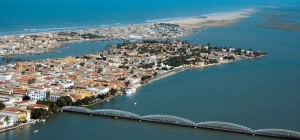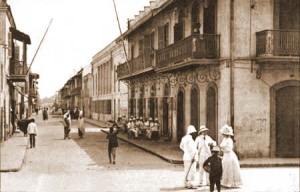
When you hear the name Saint-Louis, what comes to mind? If you are thinking about the city with the Gateway arch, that city in the United States of America, St Louis,… then think again… today we will talk about the other Saint-Louis, the city located in Senegal, which used to be the capital of the French colony of Senegal from 1673 to 1902. You heard right… so Saint-Louis in Senegal is actually much older than the American St Louis.

The city of Saint-Louis is the capital of Senegal’s Saint-Louis Region, and is located in the northwest of the country, near the mouth of the Senegal River, 320 km from the capital Dakar, on the border with Mauritania. The city was named after Louis IX, a 13th century king of France, and also in honor of Louis XIV who was the monarch at the time of the island’s settlement by France in 1659. It was the first city founded by Europeans in West Africa; before then, there were Portuguese, Dutch, English traders in the area, but they had not yet ‘founded’ cities. The city was originally known as Saint Louis of the Fort (St-Louis-du-Fort) after its fort. At least 200 years prior to the European arrival in the area, the site was an Wolof settlement known to locals as Ndar or N’dar which is Wolof for island. With the arrival of Europeans, the city became an important trade center for gold, gum Arabic, ivory, and slaves in Africa.

Nicknamed the “African Venice,” it is no surprise that Saint-Louis acquired the status of UNESCO World Heritage Site in 2000. Since then, the city has been working on renovation of ancient buildings, transforming some of the warehouses into hotels and restaurants. The city still has a lot of houses from the colonial era. It is divided into three parts: N’Dar’s island (the historical part of the city) which is connected with a bridge to the fishing village in the peninsula Guet N’Dar (the

Langue de Barbarie) and to the continental part with another bridge. The heart of the old colonial city is located on a narrow island which is a little more than 2 km (1.2 mi) long but only about 400 m (1,300 ft) wide. The island lies in the Senegal River. It is 25 km (16 mi) north of its mouth, but is only separated from the Atlantic Ocean to its west by the Langue de Barbarie, a 300 m (980 ft) wide sand spit. The Langue de Barbarie is the location of the seaside neighborhoods Ndar Toute and Guet Ndar. On the mainland, the east bank of the river is the site of Sor, an older settlement now considered a suburb of Saint-Louis. It is nearly surrounded by tidal marshes. Three characteristics give Saint-Louis its distinctive geographic appearance: the Sahel, the marshes, and the Langue de Barbarie.

One cannot talk of Saint Louis without mentioning the Signares. Deriving from the Portuguese Senhora, Signares were the women of mixed descent, French/Senegalese, also known as Métis, who formed a class of entrepreneurs women who managed to gain some assets, status and power in the hierarchies of the Atlantic slave trade. They were important in the economic, cultural and social life of the city. They created a distinctive urban culture characterized by public displays of elegance, refined entertainment and popular festivities. There are still families descending from these women entrepreneurs of the 18th and 19th centuries.
Some big attractions apart from the city itself include the National Park Langue de Barbarie which is in the southern tip of the peninsula, and covers a total surface of 2000 hectares, and the Djoudj National Bird Sanctuary which is the third largest bird sanctuary in the world, with species emigrating there from Europe, Asia, and East Africa.
If you are ever in Senegal and would like to head north of Dakar, please take the time to visit Saint-Louis, and bathe in the mix of old colonial French style and the teranga (hospitality) so well known to Senegalese people. To learn more about Saint-Louis, check out: Saint-Louis du Senegal, UNESCO World Heritage Site, and my favorite on Spirited Pursuit.


Pingback: Why the Name : Saint-Louis ? – Literary Spaces